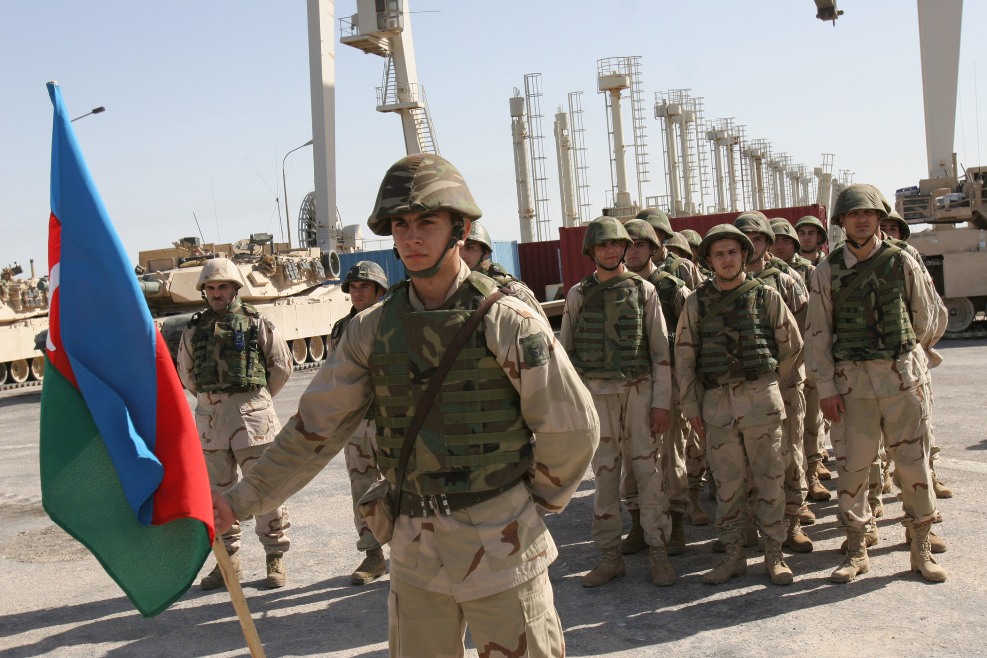By Movses Ter-Oganesyan
On May 18, Azerbaijan drew the ire of the Organization for Security and Cooperation in Europe (OSCE) Minsk Group and the Russian Foreign Ministry when it broke the shaky ceasefire agreed to by the warring parties last year. These were rare condemnations by historically neutral organizations. Using an Israeli Spike missile, Azerbaijan destroyed an air-defense system under the control of the self-proclaimed Nagorno-Karabagh Republic (NKR/Artsakh) Defense Army. This came after Azerbaijan made repeated claims of Armenian violence along the border and broke-up an alleged Armenian spy ring operating within its armed forces since 1988.
Azerbaijan made similar claims of increasing violence by its arch-foe after it devalued its national currency, the manat, by nearly half in 2015. The depreciation of the currency caused the average Azeri to lose nearly half of their life savings in two 2015 devaluations. This crisis preceded the biggest flair up of violence along the Line of Contact (LoC) between NKR and Azerbaijan since the 1994 trilateral ceasefire agreement signed in Bishkek by Armenia, Nagorno-Karabagh and Azerbaijan.
The same week that Azerbaijan attacked the air-defense system, the International Bank of Azerbaijan (IBA) defaulted on a $100 million loan payment and filed for Chapter 15 bankruptcy in New York courts. This came as a shock to markets given that the IBA had reported a 24% increase in y/y operating income in the first quarter of 2017. With more payments due in June and October, Azerbaijani news is already forecasting the potential bankruptcy of the biggest bank in the country. To make matters worse, IBA has given a $2 billion loan to Azerbaijan’s state energy giant, State Oil Company of Azerbaijan Republic (SOCAR).
In December 2016, the S&P Global Rating affirmed SOCAR’s credit rating at ‘BB’ with a negative outlook. On May 15—the same day Azerbaijan destroyed the NKR air-defense system—Moody’s downgraded the foreign-currency senior unsecured debt rating of the IBA to ‘Caa3’ from ‘B1’ and “placed it on review for downgrade following its announced debt restructuring.” As the guarantor of these struggling state owned goliaths, Azerbaijan’s own ‘Ba1’ credit rating is on review for a downgrade. This does not bode well for the Caspian Sea nation given its need to assure creditors of its ability to pay back loans; loans it desperately needs in order to secure financing for its Southern Gas Corridor project. Kazakhstan, a regional ally, is now coming to terms with pension funds it lost by sinking $70 billion tenge ($224 million) into a recent IBA venture.
The downgrade of the credit ratings comes on the heels of decreased oil and gas production, a decline in country’s construction sector, and increased inflation. As the country battles a serious case of the Dutch Disease, the ruling Aliyev clan – dependent on oil revenues to maintain power — has much reason to attempt to pacify its domestic population by rallying them around the flag. The massive Azerbaijani aggression in last April’s war came on the eve of the release of the Panama Papers, which implicated Azerbaijan’s first family in massive fraud and nepotism involving off-shore bank accounts. History may not repeat itself, but it often echoes.
With a 10-fold increase in defense spending over the past decade, Baku has acquired offensive weaponry from Turkey, Israel and Russia. Azerbaijan certainly has the impetus to find out what its military hardware is capable of. This necessity, coupled with a potential economic meltdown of the nation’s economy, provides the perfect opportunity for increased violence along the LoC. The recent deployment and withdrawal of 10 tanks near the village of Talish is an example of a ruse de guerre by Baku meant to desensitize the Armenian troops in the area. The Azerbaijani military is certainly testing the waters.
The Aliyev regime cannot afford to fight a long-term war where its oil infrastructure may come under threat, therefore it would aim for a restricted show of force in limited clashes as witnessed last year. The psychological boost the Azerbaijanis received after minimal territorial gains last April has emboldened many in the nation to think they could take over Armenia’s capital, Yerevan, if war were to ensue. In Armenia, people believe that villages and swaths of land constantly change hands during hostilities and, should it escalate to all-out-war, could lead to the Balkanization and complete dismantling of Azerbaijan. Due to public opinion in both countries, it would be very hard for either the Sargsyan or the Aliyev government to explain anything less than decisive victory on the battlefield. This, coupled with the unpredictability of any given theater of war, means an escalation cannot be ruled out.
This article first appeared on Forbes.com on July 7.
Movses Ter-Oganesyan is a fellow at the Eurasian Research and Analysis Institute.





















































